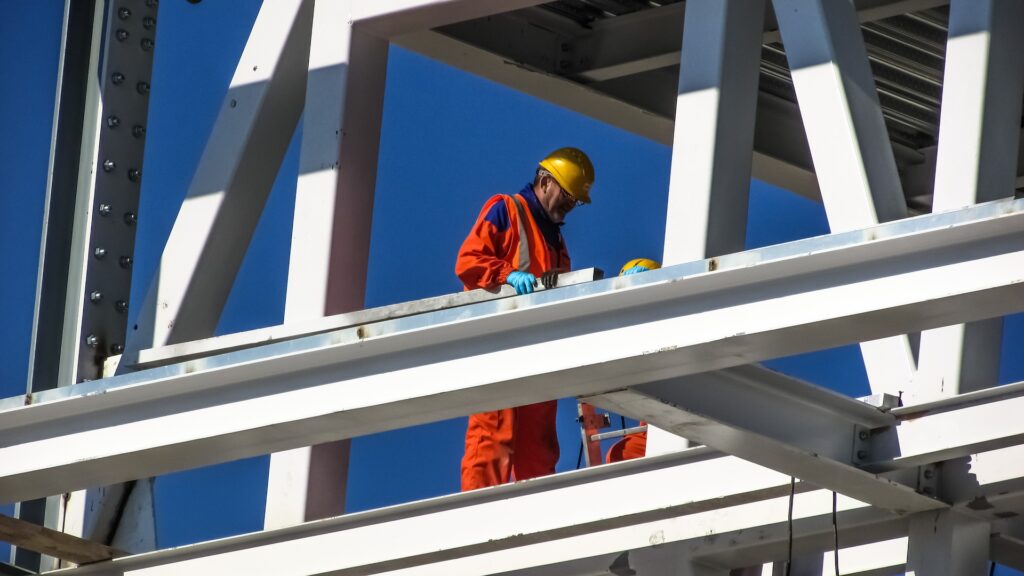While on site, it is important to wear the proper head protection. Wearing the right type of helmet for the task is vital to protect against different types of risk. Two widely applied helmet standards with important differences in performance requirements are EN 397 and EN 12492.
The main difference between these two head protection standards is the intended usage, which results in different requirements. EN 397 specifies the requirements for industrial safety helmets, which primarily provide protection against falling objects, whereas EN 12492 covers helmets for use in mountaineering which includes a risk of swinging and repeated all-round impact.
EN 397 – Industrial safety helmets
This standard goes back over 50 years and testing is only carried out on the top of the helmet. Safety helmets in the industry are intended primarily to protect the user from falling objects and from brain injury and skull fracture as a result of such an impact. A 49J impact only to the crown of the helmet is required for shock absorption, and a penetration test is conducted with a 3kg conical striker from 1m. There are no side, front, or rear impact requirements in this standard only an optional lateral rigidity test, which is a slow, progressive force loading followed by measurement of any deformation.

Additionally, the standard includes other options such as molten metal resistance and 440V electrical insulation.
EN 397 does not include a mandatory requirement for chin straps. Optional chin straps must release under a force of 150 – 250N.
EN 12492 – Helmets for mountaineers
Helmets complying to the mountaineering standard are impact tested with two 5kg strikers. A hemispherical striker is dropped from 2m onto the crown of the helmet and a flat striker from 0.5m on to the front, rear, and side by tilting the headform to 30°. In all cases, the transmitted force through the neck of the headform must not exceed 10kN. Two penetration tests with a 3kg pointed striker are also performed within a 50mm radius of the helmet’s crown, ensuring the striker does not contact the headform.
Chin straps are mandatory for EN 12492 helmets. The retention system is tested to ensure the strap does not break or stretch when tested with a force of 500N.
Though the standard refers to mountaineering helmets, EN 12492 helmets are also used for other work at height due to the type of protection offered.

EN 12492 helmets have different requirements for the harness or cradle, which must incorporate an integral chin strap that does not break or stretch under force. EN 397 helmets, however, do not require a mandatory chin strap, and an optional chin strap must break under a force of between 150N and 250N to reduce the risk of a wearer being injured by becoming caught in machinery in an industrial environment. EN 12492 helmets also feature an internal impact liner to improve side impact protection.
The Albo company range includes head protection equipment. Our team is at your disposal for all assistance and additional information in the selection of protective equipment.







